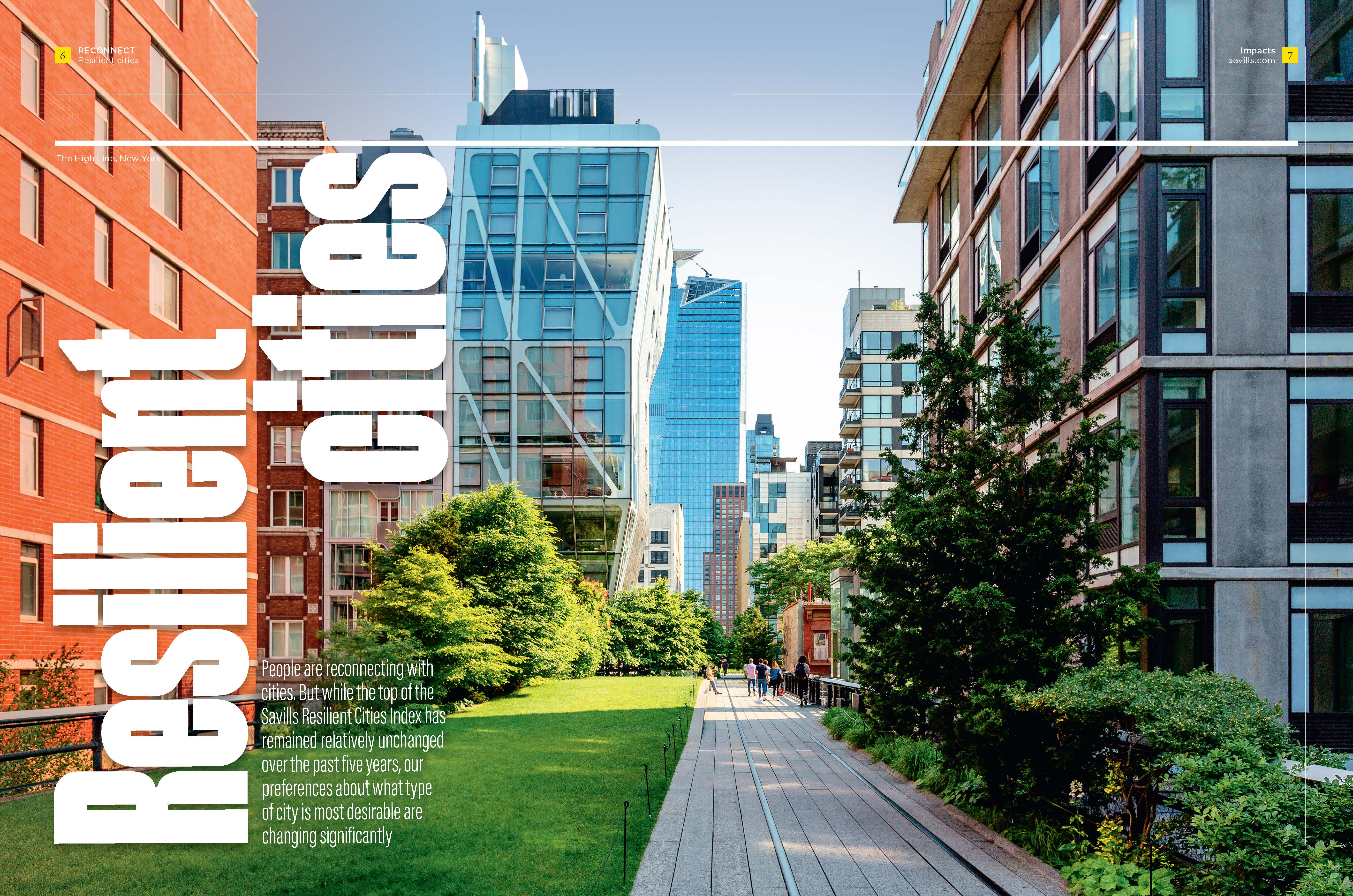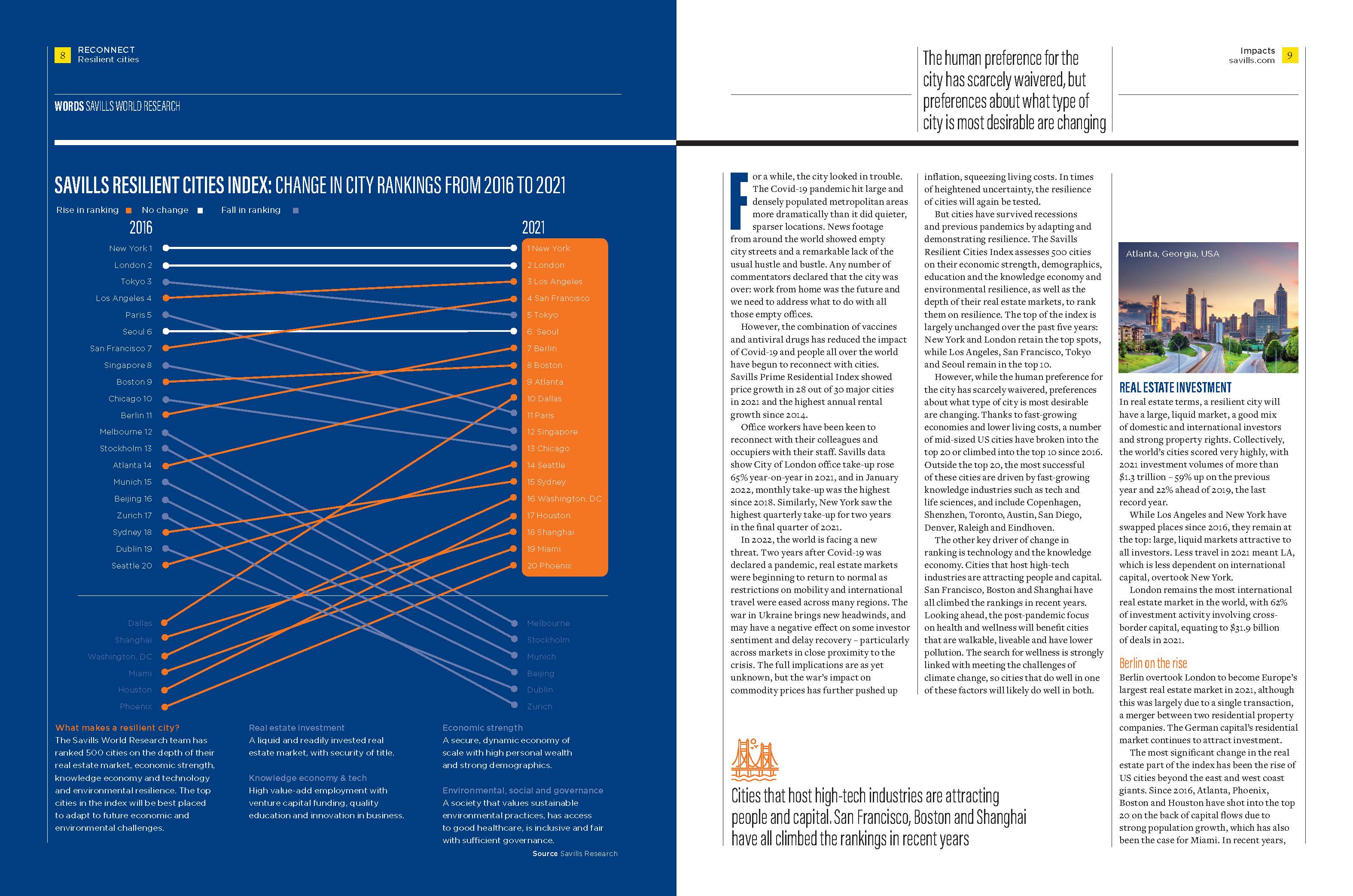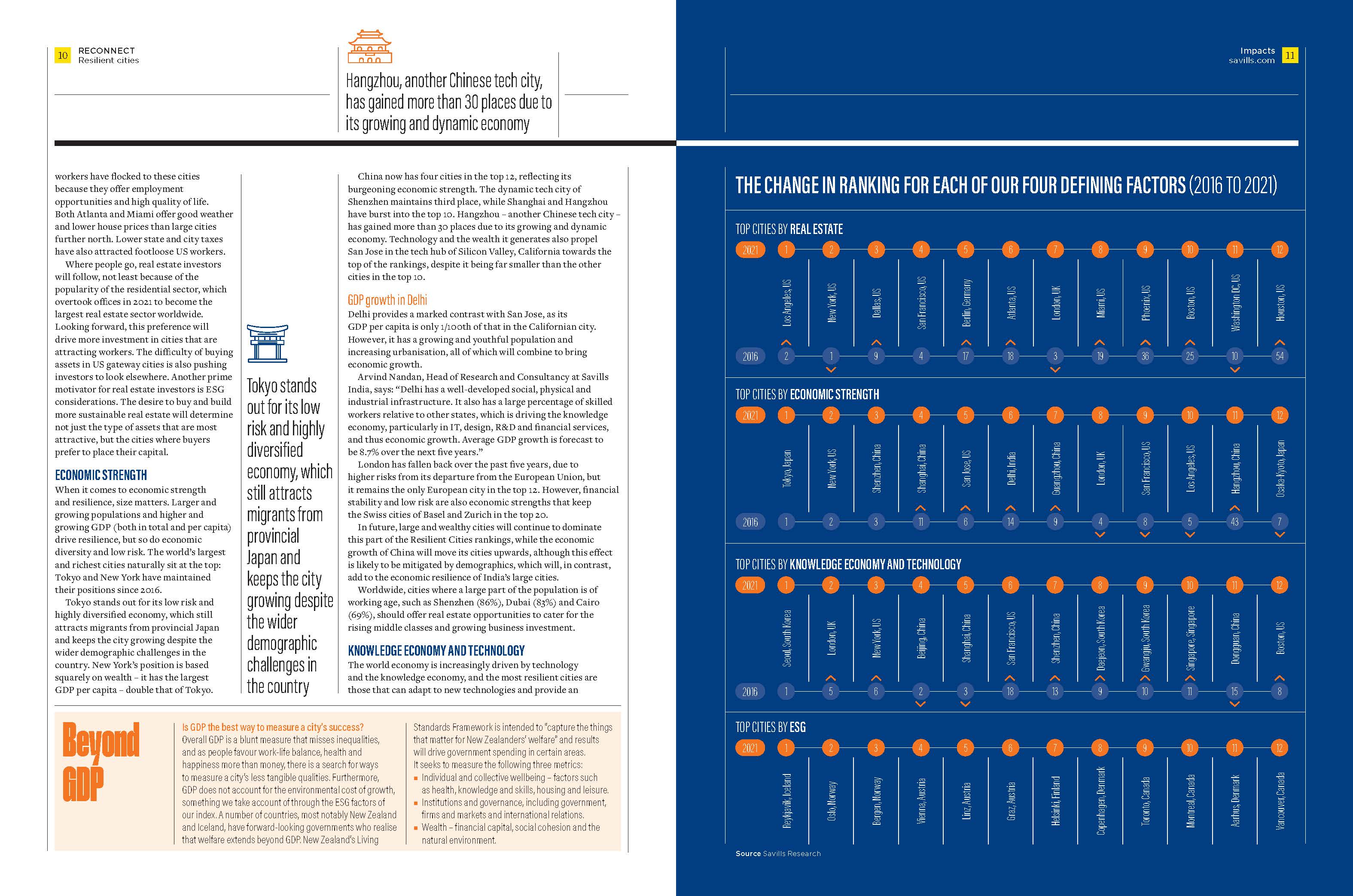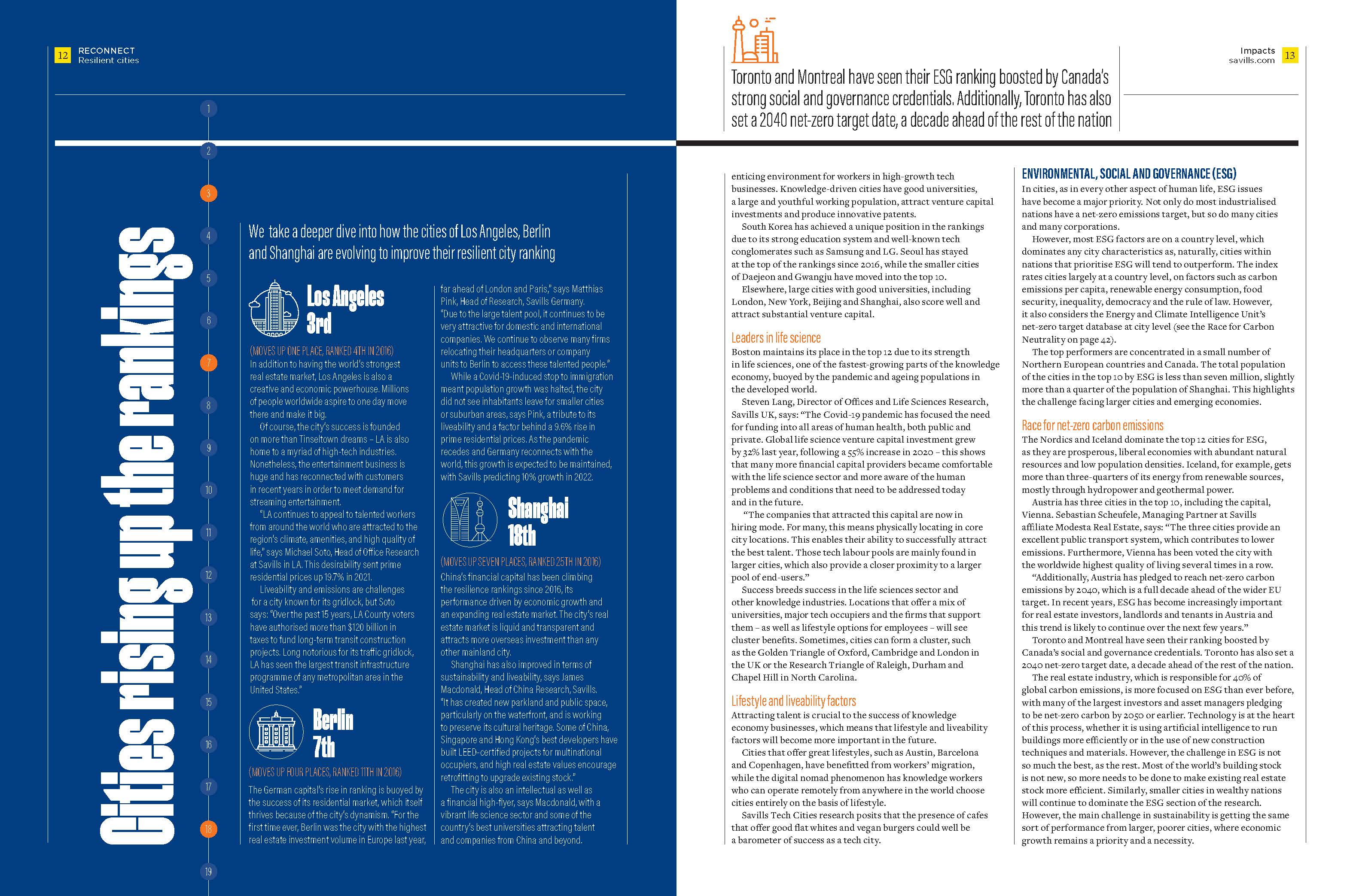






The Savills World Research team has ranked 500 cities on the depth of their real estate market, economic strength, knowledge economy and technology and environmental resilience. The top cities in the index will be best placed to adapt to future economic and environmental challenges.
Berlin overtook London to become Europe’s largest real estate market in 2021, although this was largely due to a single transaction, a merger between two residential property companies. The German capital’s residential market continues to attract investment.
The most significant change in the real estate part of the index has been the rise of US cities beyond the east and west coast giants. Since 2016, Atlanta, Phoenix, Boston and Houston have shot into the top 20 on the back of capital flows due to strong population growth, which has also been the case for Miami. In recent years, workers have flocked to these cities because they offer employment opportunities and high quality of life.
Where people go, real estate investors will follow, not least because of the popularity of the residential sector, which overtook offices in 2021 to become the largest real estate sector worldwide. Looking forward, this preference will drive more investment in cities that are attracting workers. The difficulty of buying assets in US gateway cities is also pushing investors to look elsewhere. Another prime motivator for real estate investors is ESG considerations.
(Moves up one place, rancked 4th in 2016)
In addition to having the world’s strongest real estate market, Los Angeles is also a creative and economic powerhouse. Millions of people worldwide aspire to one day move there and make it big.
Of course, the city’s success is founded on more than Tinseltown dreams – LA is also home to a myriad of high-tech industries.
"LA continues to appeal to talented workers from around the world who are attracted to the region’s climate, amenities, and high quality of life", says Michael Soto, Head of Office Research at Savills in LA. This desirability sent prime residential prices up 19.7% in 2021.
Liveability and emissions are challenges for a city known for its gridlock, but Soto says: "Over the past 15 years, LA County voters have authorised more than $120 billion in taxes to fund long-term transit construction projects.".
Long notorious for its traffic gridlock, LA has seen the largest transit infrastructure programme of any metropolitan area in the United States.
(Moves up four places, ranked 11th in 2016)
The German capital’s rise in ranking is buoyed by the success of its residential market, which itself thrives because of the city’s dynamism. "For the first time ever, Berlin was the city with the highest real estate investment volume in Europe last year, far ahead of London and Paris", says Matthias Pink, Head of Research, Savills Germany.
“Due to the large talent pool, it continues to be very attractive for domestic and international companies. We continue to observe many firms relocating their headquarters or company units to Berlin to access these talented people.”
While a Covid-19-induced stop to immigration meant population growth was halted, the city did not see inhabitants leave for smaller cities or suburban areas, says Pink, a tribute to its liveability and a factor behind a 9.6% rise in prime residential prices. As the pandemic recedes and Germany reconnects with the world, this growth is expected to be maintained, with Savills predicting 10% growth in 2022.
Shanghai, China (18th place)
(Moves up seven places, ranked 25th in 2016)
China’s financial capital has been climbing the resilience rankings since 2016, its performance driven by economic growth and an expanding real estate market. The city’s real estate market is liquid and transparent and attracts more overseas investment than any other mainland city.
Shanghai has also improved in terms of sustainability and liveability, says James Macdonald, Head of China Research, Savills.
"It has created new parkland and public space, particularly on the waterfront, and is working to preserve its cultural heritage. Some of China, Singapore and Hong Kong’s best developers have built LEED-certified projects for multinational occupiers, and high real estate values encourage retrofitting to upgrade existing stock."
The city is also an intellectual as well as a financial high-flyer, says Macdonald, with a vibrant life science sector and some of the country’s best universities attracting talent and companies from China and beyond.
Would you like to learn more? Read the full article "Resilient Cities"
Source: Savills World Research - Savills Impacts, Resilient Cities, May 2022